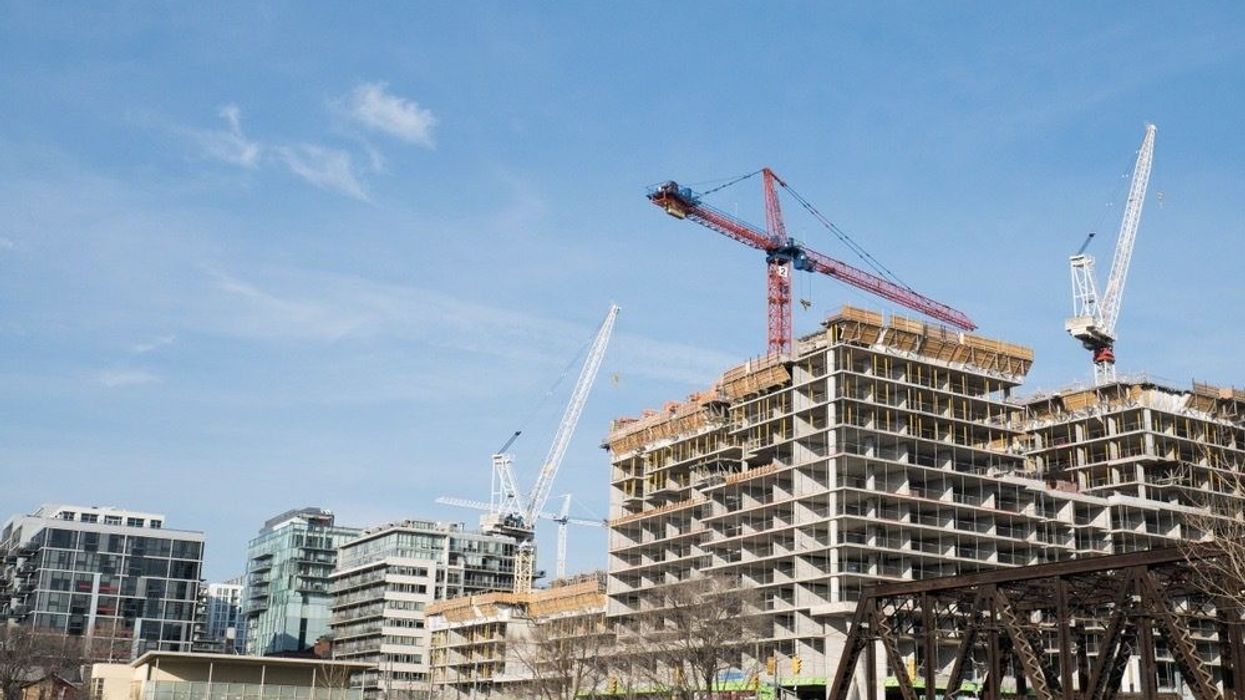The labour shortage in Toronto’s construction industry has left developers scrambling to meet project delivery deadlines and, according to the Residential Construction Council of Ontario (RESCON), the problem shows nary a sign of dissipating anytime soon.
“You do have a lot of mobility within the construction industry with people going from job to job, and there certainly have been challenges internally. Because of the pandemic, people couldn’t go to work, sometimes because they had a relative at home with an immunocompromised system,” Richard Lyall, President of RESCON, said.
Many of the problems began with supply chain delays, which catalyzed widespread scheduling problems. Construction crews would sometimes have to halt work at one site because materials hadn’t arrived and move on to the next site, at which point they’d be unable to return to the first site when materials were eventually delivered. Moreover, many projects that were supposed to launch in 2020 were postponed until this year, and with too many active job sites and too few trades, there have invariably been delays.
“It’s been an unusual set of circumstances with COVID throwing a wrench into the supply chain and that has affected demand,” Lyall said. “We do have certain supply chain problems where jobs can get held up because of material delivery delays. We have peak demand times in the spring and the fall, and that puts additional pressure on labour, but ultimately we have had problems with scheduling causing things to happen in fits and starts.”
READ: Consumers Ultimately on the Hook for Higher Construction Costs
The labour shortage is especially acute in the home renovation sector of the construction industry where cash jobs are commonplace. Anecdotally, Lyall has heard of people collecting Canada Recovery Benefit (CRB) payments while taking cash jobs on the side, with virtually no incentive to work full-time.
However, the owner of Greengold Construction confirmed to STOREYS that finding subcontractors is indeed arduous for that very reason.
“Right now, there’s more of a labour issue than a supply chain issue, because with CRB a lot of the labour force isn’t going to work anymore, so it’s harder to find labour,” Zach Goldstein said. “It’s been happening for the last six to eight months and it’s getting worse. I think material and labour shortages will persist for another six to eight months.”
The dearth of skilled trades was inevitable. Even before the pandemic, RESCON had been sounding the alarm on a looming shortage of up to 90,000 workers over the next 10 years in Ontario because of retirements and a largely barren pipeline of young workers. Lyall says that high school students are often dissuaded from entering the trades and are instead ushered into post-secondary institutions, even though there’s an overabundance of graduates vying for fewer and fewer jobs.
“Getting a degree in philosophy is great, but maybe you’d be better off reading Plato on the side because that isn’t going to get you a job,” he said. “Thankfully, the government is engaged in improving the situation with college trades and highlighting the benefits of a career in construction. Although there’s been some reform of provincial training and apprenticeship systems, we’re not out of the woods yet because more work has to be done with respect to attracting skilled trades through immigration.”





















